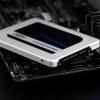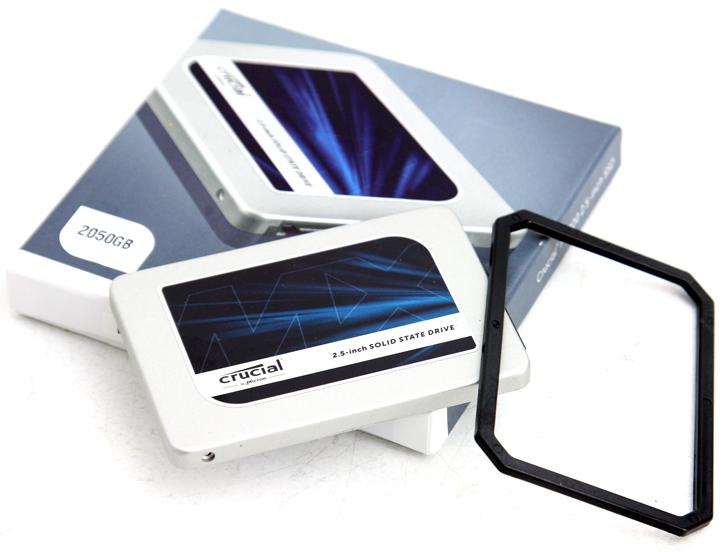Introduction
Crucial MX300 2050 GB 2.5" SSD
Incredible value for money for performance
Crucial recently released new versions of the MX300 SSD series, among them there is this huge (in volume size) 2 Terabyte model which we review today. The MX300 series should offer a bit more storage space yet remain more price-competitive at mainstream to high-end class SATA3 performance. You guys likely know it, I've been in the computer industry a LONG time and have noticed that two developments evolve in very fast paces, graphics cards and storage technology. If you look how far and fast we've become with NAND technology you can only acknowledge, it is just amazing. My first HDD storage unit was connected towards a Commodore 64, back in 1984 (!), that unit was SCSI based and could hold a whopping 10 MB of data, it did that (if memory serves me right) at roughly 40 KB/sec in read performance which was blazingly fast at that time and cost me something in the extent and equivalent of 500 USD / EURO. And yes .. here we are in an era where NVMe SSDs reach 3 GB/sec and SSDs having storage capacities of 2 Terabyte priced at that same level $499 / €520,- It is four trends that drive SSD storage to the high level momentums in evolution as we see today: endurance, performance, price and capacity. The MX 300 series ticks most of these boxes.
The Crucial MX300 2050 GB SSD offers decent enough speed (for a SATA3 unit) and remains competitive in pricing as the product is priced at €520, which boils down to €0,26 per GB. At such pricing, Crucial will once again set the tone in a fierce and saturated NAND flash storage arena. As you guys know, we've been testing NAND Flash based storage ever since the very beginning, and it is surprising to see where we have gotten. The SSD market is fierce and crowded though. While stability and safety of your data have become a number one priority for the manufacturers, the technology keeps advancing at as fast a pace as it does, the performance numbers a good SSD offers these days are simply breathtaking! You get between 450 MB/s to 500 MB/sec on SATA3 which is the norm for a single controller based SSD. Next to that, over the past year, NAND flash memory (the storage memory used inside an SSD) has become much cheaper as well. Prices a year ago settled at just under 1 USD per GB. That was two to threefold two years ago. These days a good SSD can be found under 50 cents per GB. With parties like Samsung, Toshiba and Micron the prices have now dropped towards and below the 30 cents per GB marker. This means that SSD technology and NAND storage has gone mainstream and due to the lower prices, the volume sizes go up as well. A couple of years ago a 64 GB SSD was hot stuff, then slowly we moved to 120 GB, last year 240 GB for an SSD in a PC was the norm, this upcoming year we'll transition slowly to roughly 500 GB per SSD as the norm with sub 150 USD prices. With the market being so huge, fierce and competitive, it brought us to where we are today... nice volume SSDs at acceptable prices with very fast performance. Not one test system in my lab has a HDD, everything runs on SSD while I receive and retrieve my bigger chunks of data from a NAS server here in the office. The benefits are performance, speed, low power consumption and no noise.
Micron (the mother company behind Crucial) have released the larger capacity product series that many of you have been waiting for, the MX300 series. These drives are based on vertically stacked NAND (also referred to as 3D NAND) and are now available in 275 GB, 525 GB, 750 GB, 1 TB and thus 2 TB capacities. With a low power design, this drive will be among the mainstream to fastest SSDs we have ever tested. It’s not just about performance though, these units manage 530 MB/s and write speeds of up to 500 MB/s with 4K IOPS of performance in the 80K to 90K ranges for both reads and writes. While Micron did not release any precise details about the MX300, these SSDs are 3d v-nand (TLC) based paired towards a Marvell 88SS1074B1 controller. You will have noticed it and yes, 2050 GB is a bit of a weird number ? It is with reason as Micron is reserving some storage space for a dedicated area that enhances performance with the help of a dynamic SLC written buffer which will keep the (slower) TLC effect far away and keep performance high during high burst write workloads. Crucial guarantees this SSD for 3 years under warranty and/or a proper 400 terabytes written (TBW). Have a peek and then let's head onward into the review.


